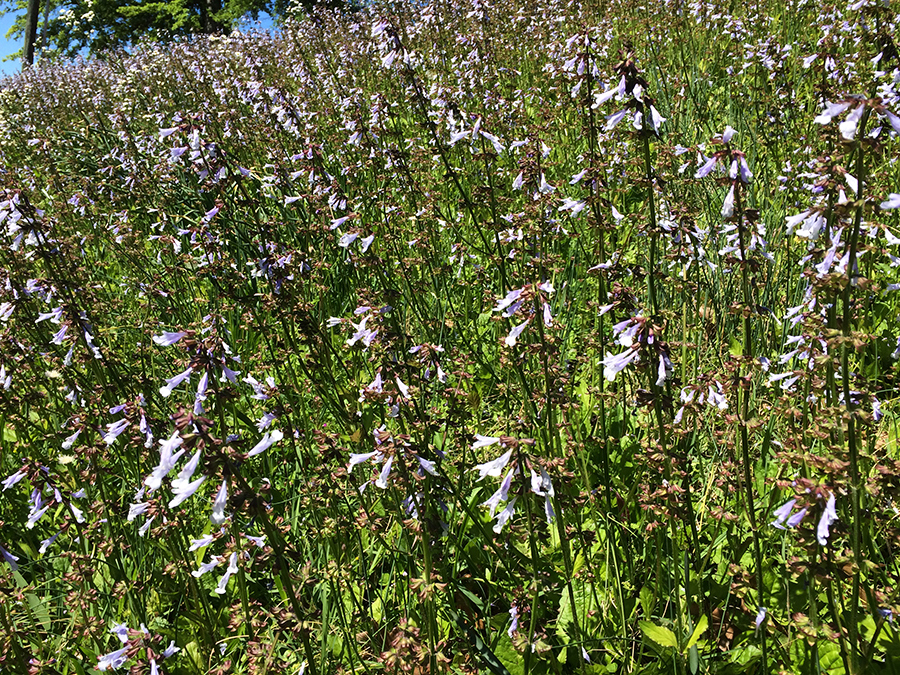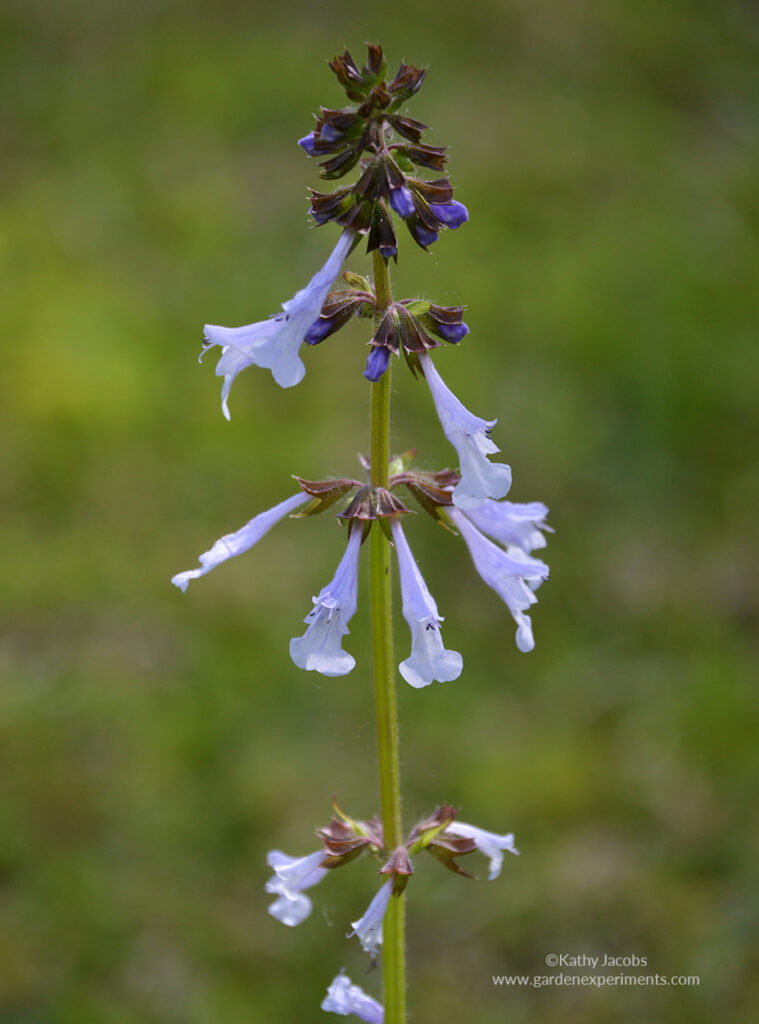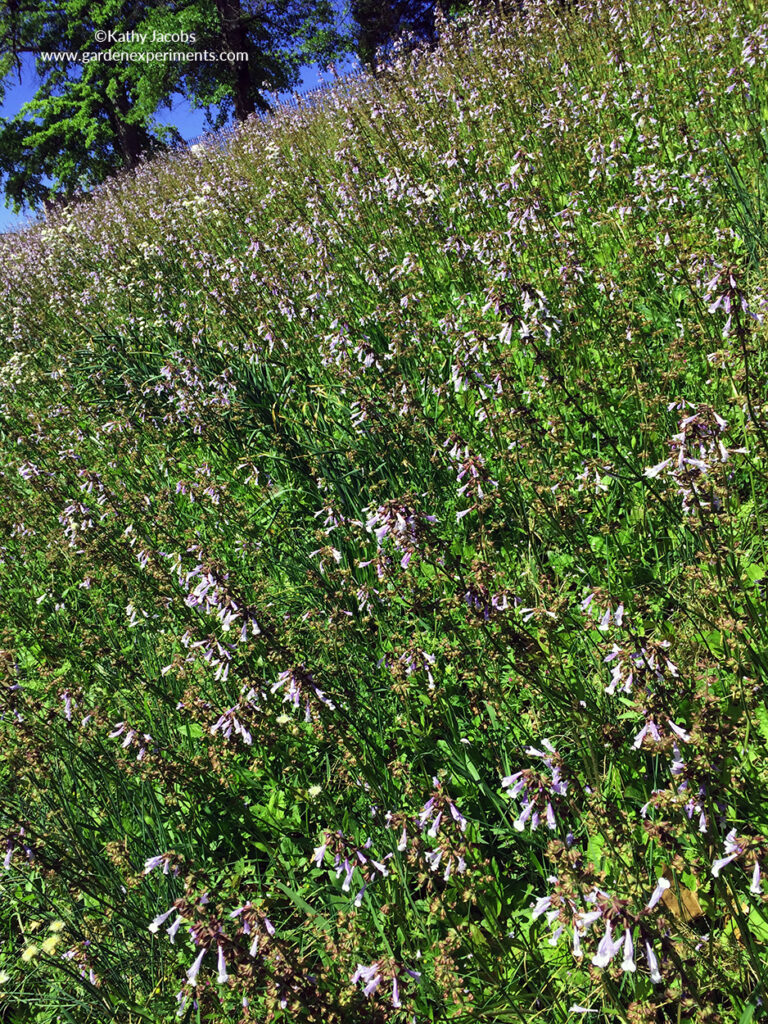Spring comes early in Mississippi. While my friends who live in states to the north continue to fight through snow and ice, I start to see the fresh green of new plant growth emerge from my lawn in mid to late-March.
The early arrival of spring weather is one of my favorite things about living in Mississippi – the early respite from the cold, gray skies of winter.
With the warming of the air, the wildflowers start to get a jump on their growth. One of the earliest bloomers is the lyreleaf sage. It starts to grow and bloom in late March and by early April, the fields and ditches along our roads are full of these pale purple-blue blooms.
Lyreleaf Sage (Salvia lyrata)
When I came across a hillside covered in lyreleaf sage flowers, their simple beauty struck me. I had to stop and admire them.
While one or two of these flowers blooming is pretty, I particularly like to see a whole bunch of them planted in mass. This really creates a carpet of pale blue-purple flowers in an area.
Native Range
Lyreleaf sage is native to the eastern U.S. from Texas eastward to Florida and north to New York and from Texas north to Kansas, Illinois, Indian, eastward. It is on the list of endangered plants in New York (2007).
Plant Description
The leaves of this perennial plant grow in a circular arrangement at the very base of the plant, known as a basal rosette. They are dark green, but can become dark purple or streaked with dark purple in certain conditions.
The leaves can be deeply lobed, and some parts of the leaf may be shaped like a lyre – hence the common name for this plant.
Lyreleaf sage produces flowers in late March through June, with the heaviest blooming period being mid-April. The flowers are borne on 1-2 foot high stems and are arranged in a circle around the stem. The blue to pale purple flowers are tubular with a reddish purple calyx.
Here is a very informative video with some great detailed photos of the different structures of lyreleaf sage.
Growing Conditions
Lyreleaf sage is commonly found in fields, the edges of forests, and in ditches alongside the road. It prefers full sun, but will tolerate some shade. It is usually growing in wet soil conditions though it can grow in a wide variety of soils.
It self sows by seed and will naturalize easily, so in some places it may take over and be considered invasive or weedy in nature. So be careful if you decide to plant some in your yard or garden. Be sure to put it somewhere that you won’t mind getting covered with this plant.
It is hardy in USDA zones 6 to 9. This is a particularly sturdy native plant. You can mow over it, step on it, and ignore it and it will continue to persist.
Wildlife Value
The early spring flowers attract hummingbirds, bees, and other pollinators that will feed on its nectar. The seeds are eaten by songbirds.



